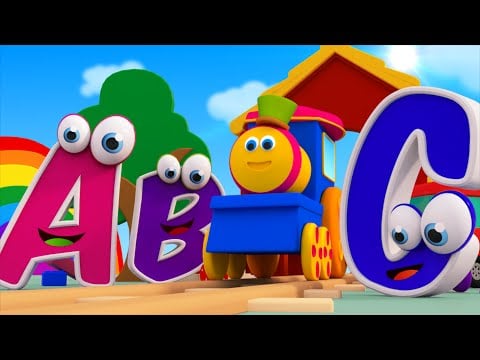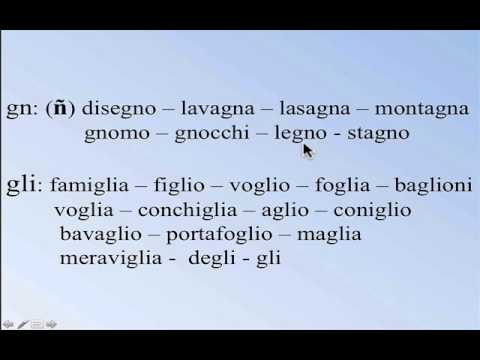Are you confident about your Italian pronunciation?
In this Italian pronunciation guide, you’ll learn the rules of Italian pronunciation.
In the end, I’ll tell you a secret to improve your Italian pronunciation.
Why an Italian pronunciation guide?
Italian is known for being one of the most beautiful languages.
Learning how to properly speak Italian is all about mastering the correct sounds and pronunciation.
Learning Italian grammar and vocabulary doesn’t get you far unless you know how to properly pronounce words.
Italian pronunciation might pose some difficulties for the beginner.
Yet it is very regular, and once the rules are understood it is easy to pronounce each word correctly.
Knowing where to put the correct stress or how to have proper inflection and intonation can help you come closer to understanding Italian.
An Italian pronunciation guide might help, but, most importantly, to improve your Italian you need to exercise your mouth!
Is Italian hard to pronounce?
Italian is a phonetic language, which means it’s written the way it sounds, and vice-versa. This makes it fairly easy for English speakers to learn Italian pronunciation, compared to other languages.
Nonetheless, it’s very important that you take the time to learn the correct pronunciation. There are tons of fun exercises that you can do to practice.
For help in spelling and pronouncing words in Italian, here’s a simple rule: What you hear is what you get.
Italian is a phonetic language, which means most words are pronounced as they are written.
The Italian words cane, sane, and pane will always rhyme (compare the English triplet “chalice,” “police,” and “lice,” and you will see that you’ve got it easy).
Another point to keep in mind is enunciation.
Native Italian speakers open their mouths wide—not just to shout, but to get those big, round, vowel sounds.
For example, if you want to pronounce the Italian letter “a”, just open wide and say “aahh!”
With these tips, you’ll be speaking perfect Italian in no time!
How to pronounce Italian letters?
The first basic Italian pronunciation rules cover letters.
Do you know how to pronounce Italian letters? That’s the basics of any language. I’ll guide you example by example.
One thing that sets Italian language pronunciation apart from other languages is that the pronunciation rules are absolutely constant.
Italian is completely phonetic. This means that it is spoken the way that it is written.
Once you learn the rules, you can correctly pronounce ANY Italian word you see written down, even if you’ve never heard it spoken before without the need for an Italian pronunciation dictionary.

Better yet, every letter is always spoken. There are no silent letters to throw you for a loop in Italian pronunciation like there are in French!
This article will teach you the rules of Italian pronunciation so you can get started speaking this language with confidence right away.
Once you’ve spent some time practicing pronouncing words using these rules, your mouth and your mind will start to catch onto the patterns.
Before you know it, correct Italian pronunciation will become second nature.
For self-study, I recommend the Italian language course Ripeti Con Me. Check out my review of Ripeti Con Me.
Let’s start this Italian pronunciation guide with vowels, then we’ll move on to consonants, one by one.
Italian pronunciation of vowels and consonants
Vowels and consonants are sounds, not letters.
The difference between vowels and consonants. A vowel is a speech sound made with your mouth fairly open, the nucleus of a spoken syllable. A consonant is a sound made with your mouth fairly closed.
Consonants and vowels correspond to distinct parts of a syllable: the most sonorous part of the syllable (that is, the part that’s easiest to sing), is typically a vowel, while the less sonorous margins are typically consonants.
Such syllables may be abbreviated CV, V, and CVC, where C stands for consonant and V stands for vowel.
This can be argued to be the only pattern found in most of the world’s languages, and perhaps the primary pattern in all of them.
However, the distinction between consonants and vowels is not always clear-cut: there are syllabic consonants and non-syllabic vowels in many of the world’s languages.
This Italian pronunciation guide introduces letters first, then deals with other aspects of this language.
How to pronounce Italian vowels?
The Italian pronunciation rules of vowels are particularly important because vowels are the sound that your audience hears.
Italian vowels are short, clear-cut, and are never drawn out—the “glide” with which English vowels frequently end should be avoided.
It should be noted that a, i, and u are always pronounced the same way; e and o, on the other hand, have an open and a closed sound that may vary from one part of Italy to the other.
Vowels are pronounced the more-or-less same wherever they occur – unlike English, in which each vowel can be spoken in several distinct ways (i.e., through vs. tough vs. though).
One letter, one sound. Let’s learn vowels!

A Sound (a) – latte, da, mia
The A vowel is towards the bottom-back part of our mouth. For this, our tongue needs to come further down and further forward than in English.
This sound is slightly more open (tongue lower in mouth) and frontal (tongue closer to teeth) than the vowel sound in the American English words jot, poppa, Ana.
It’s common for people to have the tendency to close this vowel (as explained in the next section).
So be sure to always exaggerate its openness by lowering your jaw as much as possible when saying this sound.
Try to exaggerate and lower your jaw as much as possible when creating the A vowel.
Check out the Italian pronunciation guide in the video for examples.
E Sounds (e, ɛ) – me, essere, bene
The first sound is more open (tongue lower in mouth) than the vowel sound in the English words hey, bay, say, lays.
Typically, the E vowel in the words “hey”, “bay”, “say”, “lay” glide up near the I vowel.
The second E sound is the same sound as in American “everyone.”
Remember to keep your E vowels short and crisp.
I Sound (i) – piccoli, amici
This sound has the exact same tongue position as the vowel sound in the English words “see”, “knee”, “he”, “she”.
Typically, it is shorter in length than in English. Remember to keep your I vowel short and crisp. It helps to smile wide when creating this I vowel.
O Sounds (o, ɔ) – domani, buono
The primary O sound is more open (tongue lower in mouth) than the vowel sound in the English words “no”, “so”, “go”, “toe”.
When this sound occurs in English, it glides towards the U vowel forming a diphthong.
This does not happen in Italian. The English version is also rounded, meaning you will curl your lips at the end of the sound.
Rounding does not occur in Italian.
The secondary O sound occurs in English words like “dog”, “walk”, “small”.
Here are some examples: buono (bwo-no), vostro (vaw-stro), cosa (kaw-za).
Remember to keep the O vowels short and relax your lips (do not round them too much).
U Sound (u) – sua, tutto
The U vowel has the exact same tongue position as the vowel sound in the English words “who”, “shoe”, “two”, “Sue”.
When native speakers make this sound, it is shorter in length than in English.
This sound is usually rounded in English, meaning you will curl your lips at the end of the sound.
Rounding does NOT occur in Italian pronunciation.
Remember to keep this sound short and crisp and keep your lips relaxed to avoid rounding the vowel.
For vowel pairs, the same rule applies to each letter in the alphabet. They do not change at all depending on where they are in a word and will always be the same.
When spoken at normal speeds, some movement vowel pairs will be spoken so that they will blend together to make a W sound.
For instance, “qua” is pronounced kwa and “dieci” is pronounced dyeh-chi.
As a general rule of thumb, remember to keep these movement vowel pairs short and crisp.
We’re not done yet with vowels!
A complete Italian pronunciation guide can’t ignore open and closed vowels.
Keep reading!
Open and closed vowels of Italian
Italian has seven vowels.
The letters e and o have both an open and a closed pronunciation.
The closed vowels are high-mid vowels and the open vowels are low-mid.
In a stressed position, both the open and closed vowels may occur. But in an unstressed position, only the closed variant may occur.
A famous example of the difference between the open and closed variants is the word pesca.
Pronounced with the open vowel, it means peach, and pronounced with the closed one, it means fishing.

Another example is the word botte. Pronounced with the open vowel it means blows (plural noun) and with the closed one, it means barrel.
Here is a list of Italian words with open and closed vowels with e:
- open- bene (well) festa (party) presto (soon) vento (wind) bello (beautiful)
- closed- e (and) me (me) fede (faith) neve (snow) mela (apple)
Here is a list of Italian words with open and closed vowels with o:
- open- cosa (thing) moda (fashion) no (no) posta (mail) rosa (rose)
- closed- dono (gift) mondo (world) nome (name) o (or) posto (place)
In Italian, the letters e and o have both an open and a closed pronunciation.
This is different from other languages such as Spanish in which no such distinction occurs.
In a stressed position, both vowels may be realized. But in an unstressed position, the distinction is neutralized and only the closed variant occurs.
After this pronunciation guide of Italian vowels, let’s look into consonants.
How to pronounce Italian consonants?
Most Italian consonants are similar in pronunciation to their English counterparts; the consonants c and g are the only exceptions because they vary according to the letters that follow them.
In Italian, double consonants are pronounced much more forcefully than single consonants.
Although it may not be obvious at first, a trained ear will notice the difference.
Make it a point to listen to native speakers pronounce these words.
Common single and double consonant words in Italian include:
- cane (dog) / canne (canes)
- casa (house) / cassa (box)
- papa (pope) / pappa (bread soup)
- and sera (evening) / serra (greenhouse)
The next Italian pronunciation rules cover consonants.
Let’s learn consonants!

B (b) – bella, banda, cambio
As in the English word bear. It is essentially the same as the Italian B.
C (ci) – cane, cielo
There is a “ch” C sound which sounds like the English word chicken, for example.
In Italian, this “ch” C occurs before I, E. Before a, o, u or a consonant, it is like the English “k”, it will have a hard sound like K.
D (di) – date, dove
D is very close to the American D in “dog”, but the tongue pushes a little harder against the teeth causing a somewhat more explosive sound than in English.
F (effe) – fare, famoso
F is identical to English F as in “father”, for example.
G (gi) – gatto, gelato
This consonant has two different pronunciations.
When g is followed by a, o, u, or a consonant, you pronounce it as you pronounce the g in the English word “good”, for example.
Before “e” or “i”, it is like the “j” in the word “jam“.
H (acca) – ho, hai
In general, H is silent in Italian.
You don’t really need an Italian pronunciation guide to keep quiet.
L (elle) – loro, lungo
L is similar to the English L in lake and link. But the tongue is a bit further forward in Italian (they don’t swallow their l as much as we do).
English actually has two “L” sounds: the “dark L” and the “True L.” In Italian, there is only the “True L”.
A common tendency for English speakers is to use both as if they were speaking English.
The difference is very subtle but this nuance is definitely helpful in sounding more like a native speaker.
Some tips for this consonant:
- Exaggerate by having your jaw as low as possible
- Give more love to the consonant, dwell on the L sound.
M (emme) – madre, meglio
M is pronounced the same as from the English word mom.
If you want, you can take a short break before we carry on…
N (enne) – nonna, banca, gnocchi
N is like the English words new and another and is pronounced the same as in English.
NG is like English “ing” in smoking, parking. Occurs when two consonants “n + c” are next to each other.
GN is not a common sound in English. It is the NYA sound in the word onion. It is always spelled GN, like in “gnocchi”, for example.
P (pi) – penna, piano
P is similar to the American P in spit, sputter but different from the American P in pit or putter. Americans put a puff of air (aspirate) with their Ps when starting a word.
Italians don’t normally do this. The difference is not critical for Italian (although it is for some other languages).
Q (cu) – questo, quella
Q is always followed by a “u” and this combination is pronounced like the English “qu” in the word quest.
Q usually silences the U vowel and turns it into a /w/ sound (for example, questo is /kwe-sto/).
R (erre) – fare, mare
The Italian ‘R’ sounds are also common in Spanish, Portuguese.
It’s pronounced with the flip or tap of the tongue against the gums of the upper rows of your teeth. This is the trilled r and it is different from the English r.
This is such an important sound, we have devoted a special portion of this Italian pronunciation guide if you scroll down below.
S (esse) – casa, svelto, stanza
S is sometimes strong and hissing like the English “s” in house, set, strip.
Between vowels or before b, d, g, l, m, n, r, and v it is like the English z in “zoo.” In all the other cases it is like the English “s” in “set”.
T (ti) – tardi, tutto
T is pronounced the same as in English, but no escaping of breath accompanies it in Italian.
V (vu) – vita, volgio
V is the same as in English.
Z (zede) – pizza, pranzo
Z is sometimes voiceless, like /ts/ in English words “gets” or “cats.” Sometimes it is voiced, like English /ds/ in “beds.“
In general, Italian pronunciation is quite regular.
You can tell how to pronounce a word from the way it’s written once you know what sound each letter (or group of letters) represents.
Luckily, the sounds almost always match the spelling.
Many pronounce the consonant sounds in a similar way to English.
For example, the main differences are with the dz, ʎ, ɲ, r, ts sounds.
Special sounds
GN
An Italian pronunciation guide is needed for this sound that is peculiar to the Italian language.
If you freeze up every time you try to order gnocchi in a restaurant, you are not alone.
Imagine if an English word started with ‘ny’ and then a vowel. That’s more or less what ‘gn’ in Italian sounds like.
To pronounce ‘gn’ in Italian, start with the middle of your tongue place right behind your top two front teeth.
As you release the sound, move your tongue backward, away from your teeth, and towards your throat.
GL
You find this sound in the masculine article, gli, but you will also find this letter combination within other words.
It is not pronounced how it looks, though.
Watch this video to understand better how to pronounce the GN and GL sounds:

SCE/SCI
This one is not actually hard to pronounce, but it takes time to get used to its spelling.
When followed by an ‘e’ or an ‘i’, ‘sc’ is pronounced the way we pronounce ‘sh’ in English.
Here are some examples: scena, cascina, scivolare.
How to roll my Rs?
Don’t tell me that you expect an Italian pronunciation guide to teach you how to roll your Rs!
Like anything about pronunciation, you can hardly learn how to roll your Rs by reading an Italian pronunciation guide.
The fact is, some Italians cannot roll their Rs either.
It’s called “la erre moscia” (soft r) and is pronounced almost like a French R. This type of pronunciation is a result of a regional accent or dialect and is also traditionally associated with upper-class speech.
Italians from the north of Italy, especially in the northwest region of Piedmont (close to the French border), are famous for this speech variation — which shouldn’t be a surprise, given the influence of the French language on the local dialect.
In fact, the linguistic phenomenon is also called “la erre alla francese“,
For those who do want to learn to roll their Rs, try placing your tongue against the roof of your mouth (near the front) and trill your tongue.
If all else fails, pretend you’re revving up a motorcycle or repeat the following English terms a few times: ladder, pot o’ tea, or butter.
Here’s a video that will help you pronounce this sound:

Stress and intonation
This Italian pronunciation guide also covers more advanced Italian pronunciation rules of stress and intonation.
Intonation in Italian pronunciation has to do with the emphasis or stress of some syllables or words over others.
If we keep the rhythm and phonemes the same for a phrase, a change in intonation will result in a change in meaning.
In the English phrase, “Great, we’re having steak for dinner again” I seem to be expressing a genuine feeling of excitement, but with a different tone, it seems sarcastic and perhaps suggestive of the exact opposite meaning.
Most language programs focus exclusively on vocabulary and grammar and completely overlook the question of intonation.
As a result, most language learners maintain their native intonation patterns when speaking a foreign language.
Intonation is the most characteristic element of an accent. That’s why when people make fun of accents, they tend to exaggerate the intonation more than anything else.
I know many adults are embarrassed about speaking with a foreign intonation.
Our personalities are closely linked to the intonation patterns of our voice, so completely changing them requires stepping out of our comfort zone.
You might feel “silly” stepping out of your comfort zone and sounding like someone else, but trust that you will look even sillier if you don’t.
The basic unit of Italian rhythm is by syllable. When compared to the English language, Italian pronunciation has a more distinct sound and a “bouncy” intonation.
The stress usually lies on the second-to-last syllable, or the penultimate syllable, like in the words below:
- bambini (children): bam-BI-ni
- lasagna: la-SA-gna
- ragazzo (guy): ra-GAZ-zo
The exception lies in words that have either the acute or grave accent marks (perché – per-KE) or in some words that just have the third-to-last syllable as the enunciated part (MA-cchi-na, SA-ba-to).
Although you’ll need to learn some words just by rote, most of how to say these in Italian follows this general set of patterns.
How to practice Italian pronunciation?
If you want to learn how to prepare bruschetta or bistecca alla fiorentina, you can read a cookbook—but your guests will remain hungry.
You have to get in the kitchen, fire up the grill, and start slicing and dicing.
Likewise, if you want to speak Italian with the correct rhythm, tone, and intonation, you have to talk. And talk and talk and talk until your mouth is numb and your brain hurts.
So make it a point to listen and repeat Italian—whether you purchase a CD or listen to an Italian podcast, watch Italian TV on your computer via broadband, or visit Italy.
Because you can’t eat a description of minestrone alla milanese, and you can’t speak Italian without opening your mouth.
Reading this Italian pronunciation guide is not enough!
The best way to improve Italian pronunciation
I’ll be brutally honest.
Reading all these Italian pronunciation rules is not going to improve your pronunciation at all.
Only listening to native speakers, speaking yourself, and receiving feedback can help.
If you’re alone, the best way to improve Italian pronunciation is the audio course “Ripeti con me!”.
It’s a series of audio lessons that prompt you to speak and think directly in Italian, thus bypassing the grammar rules and pronunciation rules of your native language.
Throw away your pronunciation guides and take a lesson today!
If you need to improve your pronunciation to sing Italian songs, the place to go is the Italian pronunciation guide for singers.


















